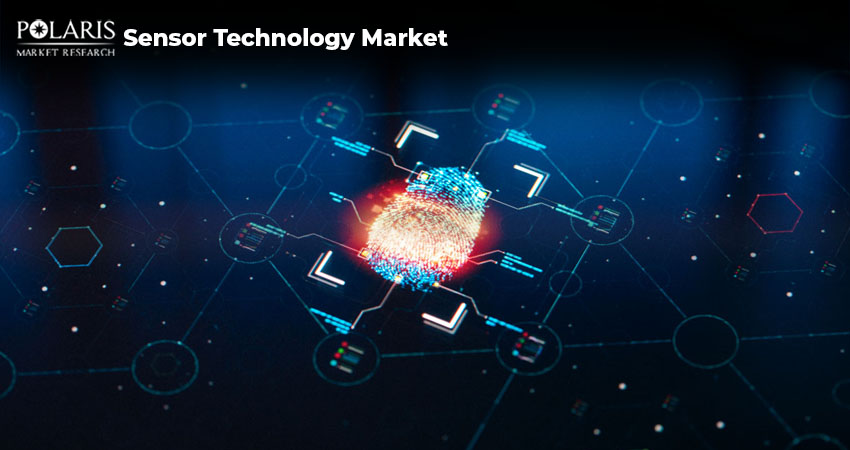How Is Sensor Technology Transforming Industries Worldwide?

Sensors are everywhere around us. Every industry relies on them today. Be it automotive, healthcare, or agriculture. The use of sensors enables real-time insights. Sensors also allow for smarter systems across sectors. So, what is it about sensors that results in their high usage globally?
This blog post explains everything you need to know about sensors. It covers the various types of sensors and their benefits. Emerging trends that are shaping the sensor technology landscape have also been covered.
Sensor Technology: Overview
Sensors are devices that detect changes in their surroundings. These changes are then converted into electrical signals. Sensors can detect changes in various parameters. The signal can be analog or digital. The processed signal can then be transmitted or stored.
Types of Sensors
Now that you know the basics of sensors, let’s look closer at their types:
Temperature Sensors: Temperature sensors are used for detecting and measuring variations in the level of heat. These sensors are present in both consumer products and complex systems. Thermocouples and thermistors are typically used types for measuring heat level changes.
Light Sensors: Light sensors come into play for detecting the levels of illumination. Several systems use photodiodes and phototransistors as light sensors. Light sensors are a part of automatic lighting systems. These sensors also have a role to play in controlling camera exposure.
Pressure Sensors: Pressure sensors are used for measuring the force exerted by liquids or gases. Automotive sensors rely on these sensors for monitoring engine and tire conditions. Pressure sensors are also a part of industrial automation and control processes.
Motion and Proximity Sensors: Have you ever thought about how systems can sense if something is moving or if there is an object nearby? Well, there are motion and proximity sensors in place. These sensors come in the form of gyroscopes and ultrasonic sensors.
Optical Sensors: Optical sensors have the function of measuring the presence of light or colors. These sensors are found in industrial inspection systems and consumer electronics. Several consumer electronics also make use of these sensors.
Soil Moisture Sensors: These sensors are used in precision agriculture for measuring the moisture in soil. These sensors can provide information on hydration in real time. Using soil moisture sensors, farmers can easily manage their irrigation timings and improve crop yield.
Military Sensors: Military sensors are highly important for defense systems. The use of these sensors helps improve situational awareness. They also ensure communication between systems is reliable.
Space Sensors: Space sensors can withstand harsh conditions. They are primarily used for collecting data and monitoring systems in real time. Their use in spacecraft navigation supports outer space missions.
Emerging Trends Transforming Sensor Technology
Some of the major trends shaping sensor technology are given below:
Miniaturization and Micro-Electromechanical Systems (MEMS): The world is increasingly moving towards compact and portable devices. This shift has led to a surge in the demand for miniaturized sensors. Using MEMS, manufacturers can fabricate small electrical and mechanical components onto a single chip.
Multi-Sensor Fusion Technology: Multi-sensor fusion systems take and combine data from various sensors. This data integration offers a more detailed understanding of the environment. Multi-sensor fusion systems are essential for advanced driver-assistance systems (ADAS).
Internet of Things (IoT) Technology: IoT technology has become increasingly popular over the years. The technology relies on advanced sensors for its operations. IoT-enabled sensors can monitor systems in real time. These sensors also enable predictive maintenance.
AI-Powered Sensors: The use of artificial intelligence (AI) helps improve the processing of sensor data. Additionally, data can be interpreted more accurately by integrating AI with traditional sensors. This helps improve accuracy and broadens the application scope of sensors.
Benefits of Sensor Technology
There are various benefits of using sensors. Below, we’ve given some of them:
Data-Driven Decision Making: Sensors generate real-time data. The availability of real-time information means companies can make faster decisions.
Seamless Automation and System Intelligence: Sensors are an important part of smart automation systems. Their use provides machines with the capability to respond autonomously to environmental input.
Personalization and Enhanced User Experience: Sensors allow hyper-personalized experiences in consumer electronics. Using sensors, devices can cater to specific user preferences.
Resilience and Risk Mitigation: Sensors are essential in high-risk environments. They can provide early warnings in sectors like manufacturing and aviation.
Support for ESG Goals and Digital Sustainability:Governments and businesses are increasingly emphasizing environmental sustainability. Using sensors, it’s possible to track sustainability metrics. Sensors can also help meet compliance standards.
Key Industry Developments
Below, we’ve given some key developments that are transforming the sensors industry:
Bosch Sensortec: AI-Enabled Sensors for Edge Applications
Bosch Sensortec showcased its latest advancements at CES 2025. The company’s AI-enabled sensors have the capability of performing AI inference on the edge. These sensors help reduce the dependence on cloud computing.
Texas Instruments: 77 GHz Radar Sensor for Satellite Architectures
Texas Instruments (TI) introduced its 77 GHz millimeter-wave radar sensor chip, the AWR2544, in January 2024. The company stated that the chip is aimed at satellite radar architectures in vehicles. The ability of the chip to improve sensor fusion and decision-making allows for higher levels of autonomy.
Conclusion
Sensor technology is present almost everywhere in the modern world. The technology enables automation and allows for real-time decision-making. Ongoing advancements in emerging technologies are improving the performance capabilities of sensors. Businesses globally are increasingly investing in sensors to meet efficiency and sustainability goals.

